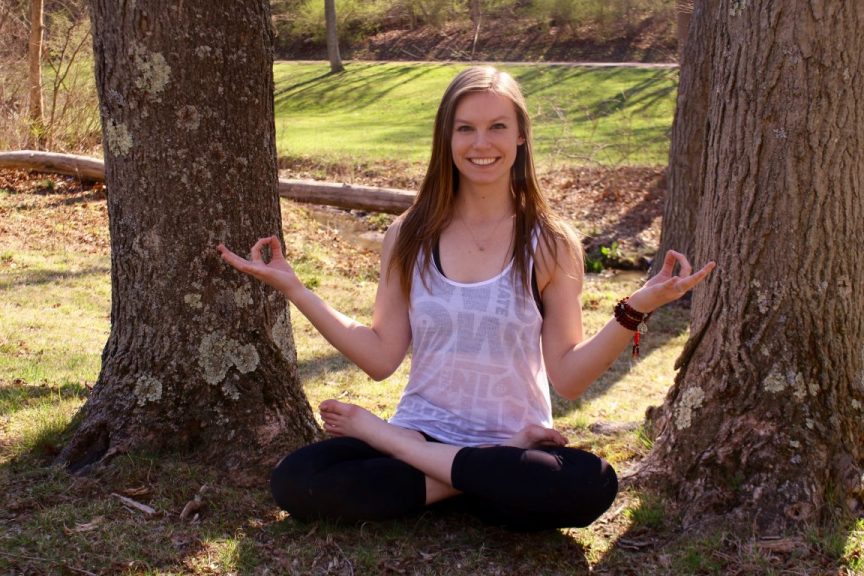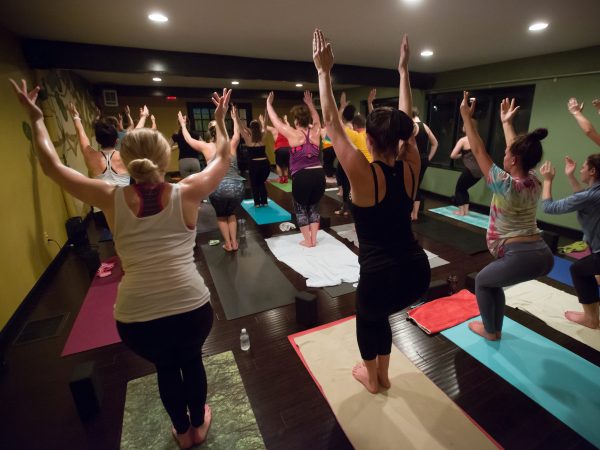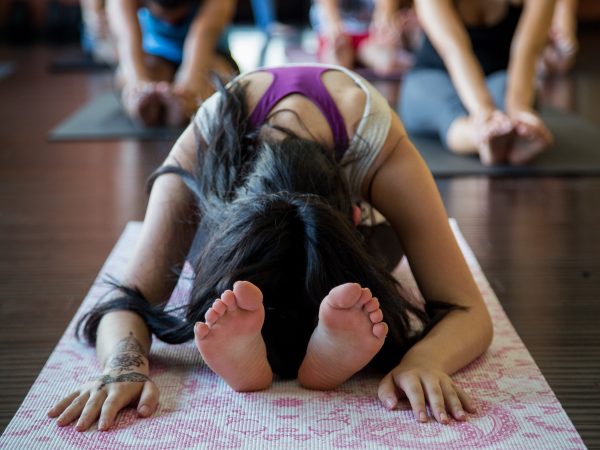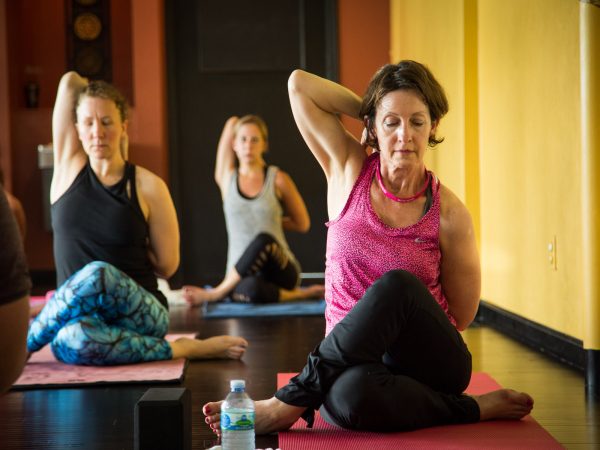The Truth about Religion and Yoga

I am a self-professed lover of knowledge, in every form. Religions in particular interest me; learning about the foundations of people’s lives, the philosophies they use to accomplish the most basic tasks in life, is fascinating. No, more than fascinating—enlightening. I might be alone in this regard, but I have studied religions across the globe, finding similarities, reveling in differences, and finding peace in the fact that all of the philosophies are (in their most basic forms) the same. No matter what the culture has become surrounding those religions, the basic tenets are all about loving each other, loving ourselves, and reaching out with compassion to others. As such, I believe that religion, in any form, is an essential part of everyone’s yoga practice.
And before you scoff and say “my yoga has nothing to do with religion,” think again. Yoga is rooted within religion. It was created as an eight-part system so that yoga could magnify and exemplify all that Eastern religions held sacred—whether it be finding stillness and ultimate reality through meditation or moving our bodies through asanas to prepare us for the transcendence of samadhi, that higher awareness of consciousness that we obtain so few times in life. Yoga teaches us about these Eastern religions in non-judgmental ways, and never pushes, never pressures. Rather, it comes naturally as we tune into our bodies and reach inside ourselves and realize that the only way to find balance is to learn more—discover more—and then apply those things we learn to our lives. Whether you call yourself a Christian or a Jew or an atheist or a Hindu, yoga plants itself inside of you and brings greater balance.
Maybe you’ve heard of the Tao Te Ching. It is the world’s second most translated book after the Christian Bible, and one of the most difficult books to understand; depending on the person translating the book, English versions can vary greatly copy to copy. It is a philosophy vague at best to those of us with only a casual knowledge. But within the pages of this book of poetry is the idea of ultimate reality; of seeing clearly, rather than muddling within confusion. Translated, the book tends to become the very thing it swears to condemn; however, when studied closely, the Tao Te Ching gets clearer—and more in line with the philosophy of yoga than you might believe.
I studied this book in college, that wonderfully engaging time of life where things never slow down, and breaks never truly happen. I was taking as many classes as I could feasibly handle, and being an English major ensured that I was reading and writing—constantly. There was little to no time for anything else. The only thing that helped calm my mind was walking—to class, from class, to the store . . . I walked everywhere. It allowed my brain time to process information that it normally wouldn’t focus on. It was my time to relax, my time to savor the moment. I lived on a lovely campus that was especially beautiful in the fall, when leaves would turn brilliant colors and constant, comforting nostalgia would set in. As I studied the Tao Te Ching, I realized that my walking time was the only time during the day that I would really allow myself to slow down. This Eastern philosophical religion teaches of this idea of yin and yang, or opposites; that everything that is has an equal and antithetical twin. For instance, take the yin/yang symbol; black opposite white, yang opposite yin. Both of these have distinct qualities that create equal differences—yin is warm and light, yang is cold and dark. Yin is generally referred to as the masculine trait, yang as the feminine. Yin is filled with movement, while yang is filled with stillness. Both are clearly not the same, and both are also completely necessary. I realized that autumn that I was allowing my yang side to dominate my yin—I wasn’t taking enough time in my day to breathe and be still.
Foundationally, yin is located on our right side and yang on our left. They are connected to our left and right brains, respectively, yang involved with our logical, rational side and yin involved with our creative, artistic side. In this Western world, we tend to overextend yang practices and don’t leave as much time for the quiet stillness of yin. We have been trained to think that constant movement is important, that it will exercise us sufficiently and bring us to health. But if we don’t stop and still ourselves in poses, or take time for meditation (a very yin practice), we lose far more health than we realize. Just like in this world where so many people place more importance on men’s characteristics than on women’s, art is being taken away in schools, and stillness and quiet is harder and harder to come by, we tend to think that getting our exercise in for the day constitutes movement only. How wrong we all are.
As I consciously took time in college to breathe and calm the mind, I saw a marked difference in my behaviors. No longer was I stressed beyond my limits, but I was finding more time to study, and more focused efforts in my assignments. I allowed my yin side to dominate as I wrote, allowing time to think and be truly creative. Walking became a conscious meditation rather than an unconscious one. I had a friend once who caught up to me as I was proceeding through campus and remarked on my calm state-because how many people actually look calm on a college campus? Balancing our yin with our yang, or more simply put, balancing our fiery practices with the stillness of meditation, causes us to find greater peace within ourselves. When we allow both sides to guide our practice, we find contentment, named santosha in Sanskrit. We allow ourselves to enjoy a better quality of life.
As I began to bring my knowledge of this refocused spirituality to my mat, I was able to find a newfound love for balance—and peace. These philosophies shape the way I move and feel within my practice, and they shape yours too–even if you are not completely aware of it yet. The next time you find an opportunity to enjoy stillness, on or off the mat, focus on developing your deeper religious connection and rebalancing your yin and yang. This balance breathes peace and life into your practice—and into everyday actions, like walking the dog or driving to work. Find a new way to look at life, and see how much things shift and change perspective—and how much you grow as a result.




